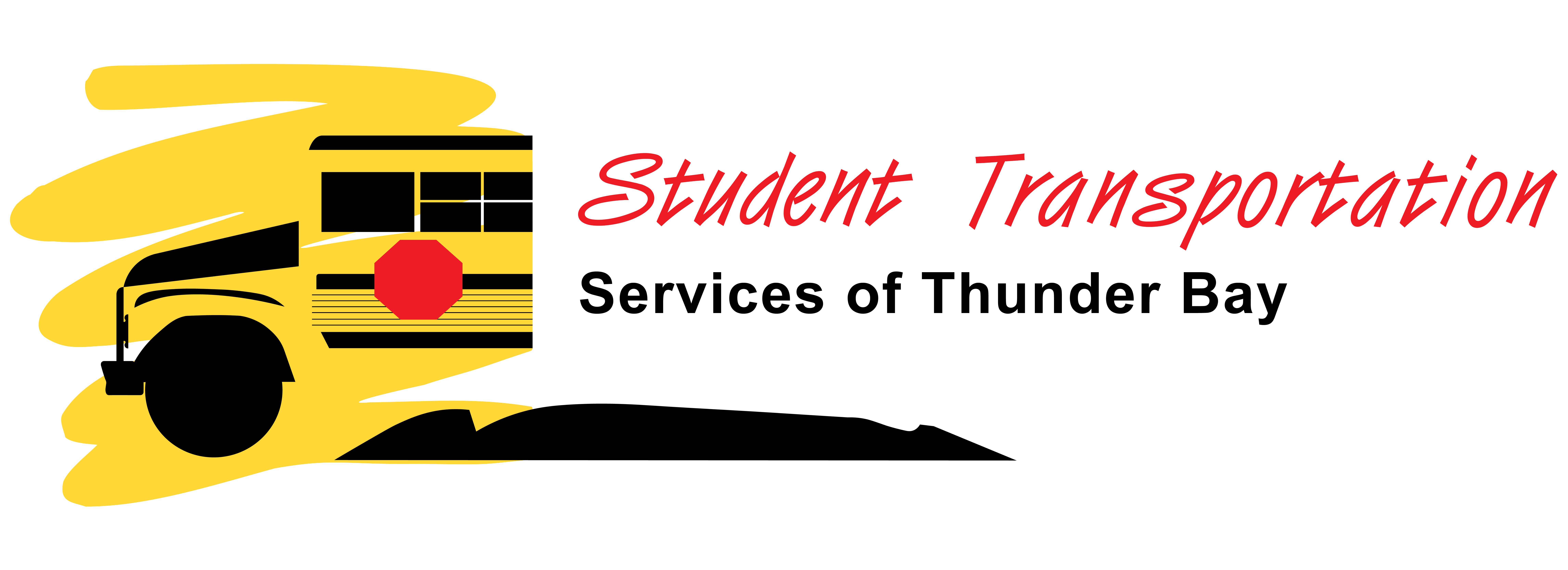School Bus Transportation Safety Initiatives
Student safety is our number one priority
Video Cameras
In the interest of safety and in an effort to reduce student discipline problems and vandalism on school buses, video camera surveillance systems have been placed on school buses under contract to the Boards.
Reflective Tape
All of the school buses contracted by the Boards have been outfitted with reflective tape to improve visibility.
First Rider Program
The First Rider Program was developed to help the very young first time riders of school buses overcome any fears that they may have about riding a school bus. This is an opportunity to teach them about school bus safety. The First Rider Program is a community endeavor involving School Boards, City Police, O.P.P., City of Thunder Bay, Community Safety Groups, and School Bus Operators. It is held in August each year.
Route Audits
Periodically throughout the school year, route audits are performed by STSTB to ensure compliance with Board Policy. Examples of items that are examined include safety of stops, capacity, distance between stops, condition of roads and turnarounds, route efficiency, length and time of route and student and road eligibility.
Route Audits may result in changes to a route, ie, stops changed or deleted, times changed, etc. These changes may occur at any time during the school year. Affected students and parents will be contacted by STSTB or the school of any significant route or time changes.
Identification of Hazardous Situations
Periodically, unusual safety hazards need to be evaluated. This process is done in conjunction with Police Services, STSTB , school bus operators, and drivers. A consensus is reached and a written report on the situation will be kept on file.
Driver Training
Not just anyone can get behind the wheel of a school bus. It takes a professionally trained person to control a vehicle safely, watch traffic and road conditions and at the same time manage a bus full of high-spirited passengers. School bus drivers have an extremely important job and responsibility. From the time the drivers make the first stop on the route until the last passenger disembarks, the safety of someone else's children is in their hands.
The legal requirements for becoming a licensed school bus driver are very demanding: between 20 and 40 hours of specialized training is followed by written exams and a road test in the bus. Driving and criminal records are reviewed and regular medical examinations are required.
Every driver must complete certified driver improvement courses, as well as know traffic laws and safety procedures thoroughly. Periodic re-examinations keep the school bus driver sharp and safety-wise.
Radios
Each school bus is equipped with a two-way radio giving the bus driver contact with their Operators or the STSTB office as needed.
Crossing Gates
All of the buses employed by the Boards are equipped with a stop arm located at the front of the bus. This stop arm is activated when the bus is stopped and provides a guide for students crossing in front of school buses. It ensures students are the required 3 metres ahead of the bus when crossing.
Strobe Lights
Some school buses travelling on our highways are equipped with strobe lights
Visible Parent
A parent or guardian is required to meet the bus at the designated stop, be visible to the bus driver, or have a responsible sibling or caregiver there when Kindergarten students are being picked up and dropped off.
Safe Arrival Program
Member Boards' all participate in a safe arrival program. The Safe Arrival Program helps to ensure that all children who leave for school arrive at school safely. Parents' active participation in this program ensures the the program responds quickly to an emergency situation.
ID Tag Program
Each September new Junior Kindergarten students ride the bus to school for the first time. This program helps to alleviate any potentially confusing experiences for JK students on their first week of riding the bus. The use of ID TAG identification can be an effective way to improve safety and confidence. This method of identification ensures that bus drivers and teachers can readily identify new students that are riding buses for the first time..
Emergency Evacuation Program
All schools are required to provide training in emergency evacuation of a school bus to elementary students by October 31 of each new school year. Should an emergency arise in the P.M. where buses cannot deliver students home, each situation will be handled on a individual basis with all pertinent information posted/updated on the STSTB website.
CAA Bus Patroller Program
STSTB offers the CAA Bus Patroller Program which educates students in grades 5 to 8 to assist with school bus safety, helping peers board and exit safely, reinforcing positive behavior, and supporting emergency preparedness.



